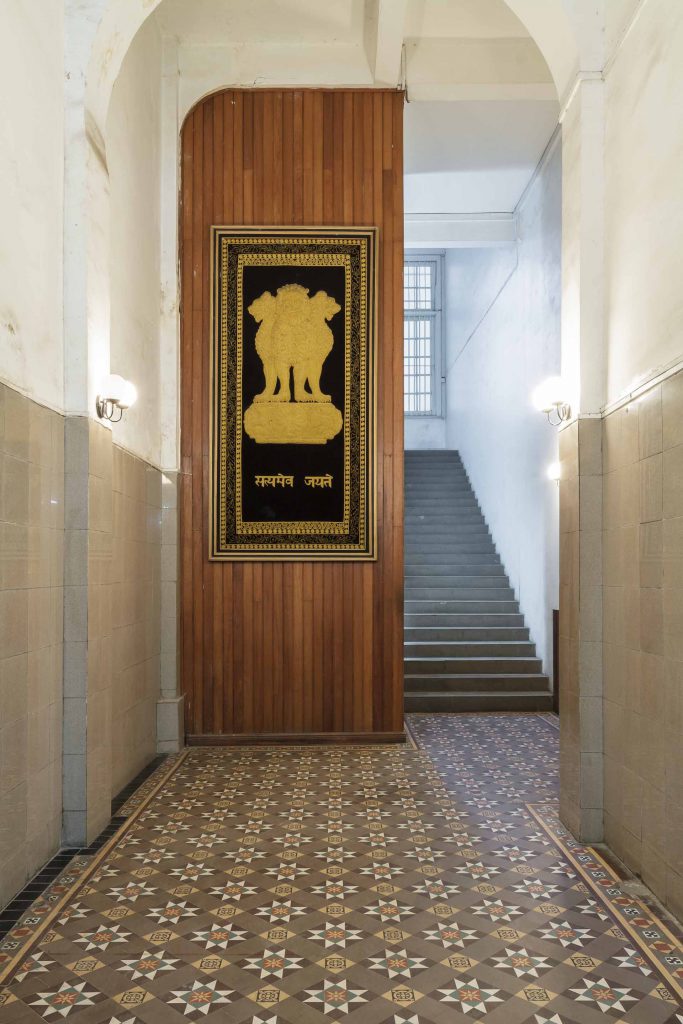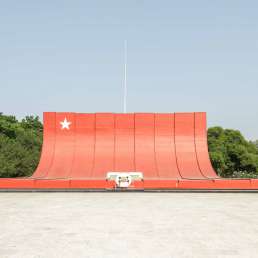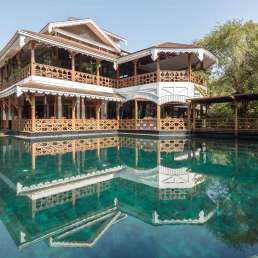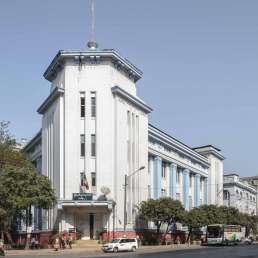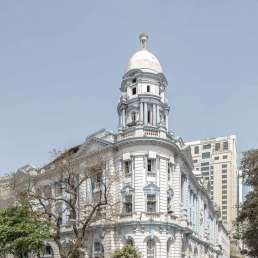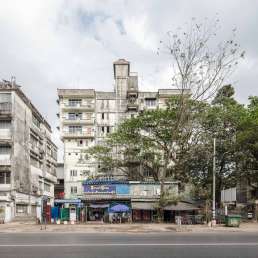Formerly: Oriental Life Assurance Building
Address: 545-547 Merchant Road
Year built: 1914
Architect: Unknown
This building began as the offices of the Oriental Life Assurance Company, founded in Calcutta in 1818. The firm served European clients almost exclusively and offered an indispensable service, as colonial postings had high mortality rates due to the climate, tropical diseases and poor medical infrastructure in such far-flung corners of the Empire. Tellingly, the few companies that deigned to insure the local population adopted overtly discriminatory policies: the premiums were usually much higher than those levied on Europeans.
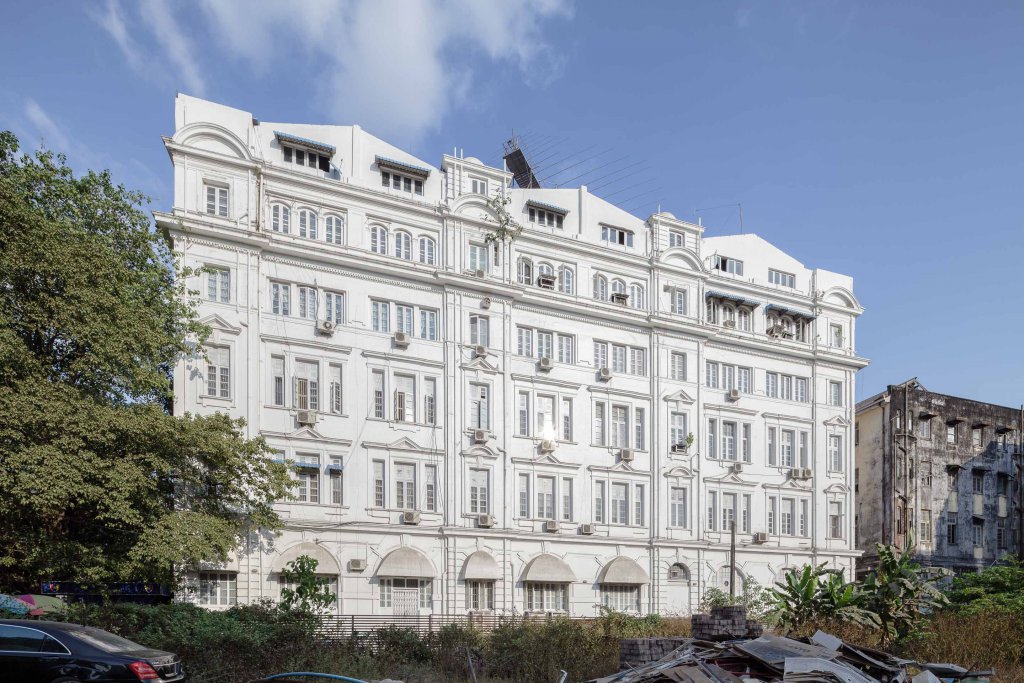
Large trees make this whitewashed building difficult to appreciate in its entirety from the Merchant Road side. It is tall for Yangon’s heritage buildings, measuring six floors from bottom to top. The building’s site is narrow but deep. The demolition of the American Baptist Mission Press building, across the road from 36th Street, has cleared up the space for now and you can enjoy a better view from the idle site.
The Indian Embassy moved into the premises in May 1957. By this time, many Indians had already left the country ahead of the Japanese invasion in 1942. As colonial order broke down in the wake of the aerial bombardments of December 1941, Indians became increasingly concerned for their safety. Many still remembered the bloody riots of the 1930s, which pitted striking Indian dockworkers against their Burmese replacements. This perceived threat—many Indians remained in Burma and were not targeted after the British withdrawal—caused hundreds of thousands to embark on a long and arduous overland trek northwards, to India. The writer Amitav Ghosh collected several accounts of those who took part in his 1942 Burma Exodus Archives (available online, on the author’s blog). Collectively they shed light on one of the lesser-known forced migrations of wartime Asia.
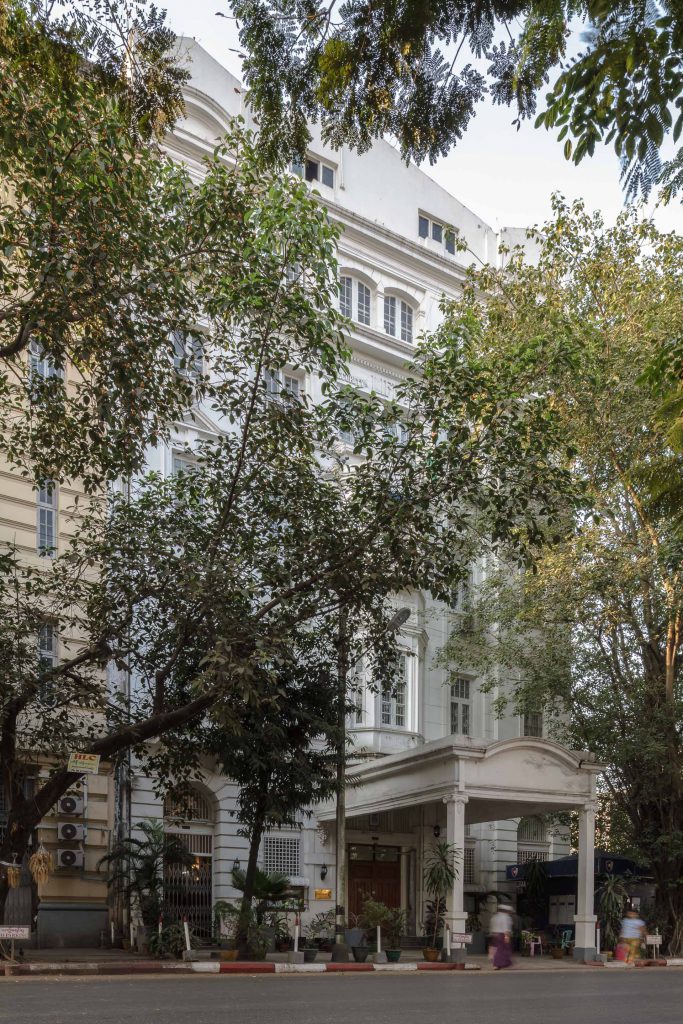
Upon seizing power in 1962, Ne Win’s nationalisation drive led to the expropriation of Indian assets and the expulsion of several hundreds of thousands of Indians. The embassy helped with the logistics of yet another large-scale, and again, little-known forced migration. Planes were chartered and “Burma Colonies” in large Indian cities sprang up, housing the so-called “Burma Repatriates”.
Indian–Burmese bilateral relations have warmed considerably since the mid-1990s. They reached rock bottom when India supported pro-democracy activists in the wake of the 1988 uprising. The pro-democracy publication Mizzima, now based in Yangon, was founded in exile in India. Recently the much-touted “Asian Crossroads” linking China with India via Myanmar have created renewed interest in economic cooperation, with a port and special economic zone in Sittwe designed to better connect India’s less-developed northwestern states to the Indian Ocean. The Indian Embassy was renovated in 1999–2000. Embassy staff today still assist Myanmar’s stateless inhabitants of Indian ancestry with obtaining Indian citizenship. A nationwide census was carried out recently; it could help to ascertain just how many stateless “Persons of Indian Origin” (PIO) there are in Myanmar today. However, details have not been published yet for fear of political repercussions. Some estimates put the number of PIOs with neither a Myanmar nor Indian passport as high as one million.
